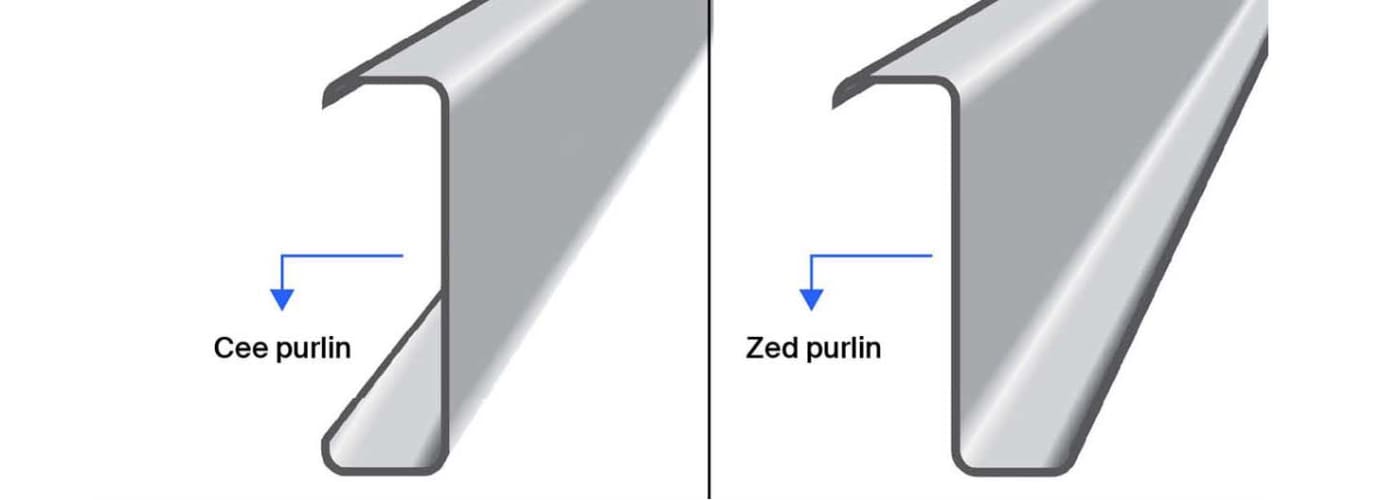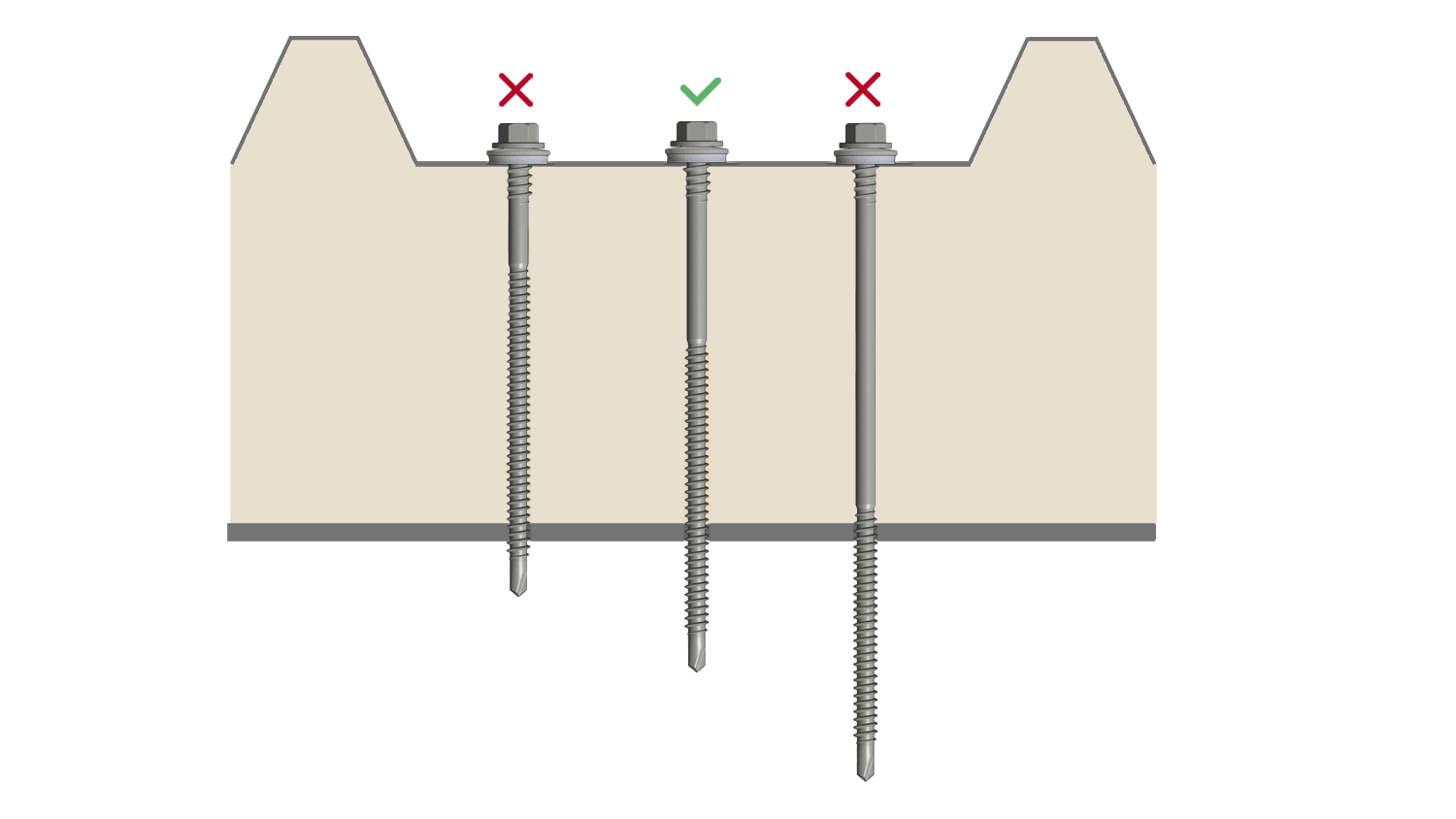
What fasteners should be used to fix sheeting to purlins for roofing?
- Read time: 3 minutes
- Date: 12 Jun 2023
- Sheeting & Cladding
Cold rolled steel purlins are lightweight horizontal beams used to provide structural support in metal frame buildings such as those designed for industrial or agricultural use. They are commonly used in roofing applications to support the roofing system which is secured directly to the purlin.
Purlins are usually manufactured from galvanised steel and come in a range of different lengths, thicknesses and profiles. The most common types of purlin profiles for roofing applications are Zed purlins (shaped like a Z) and Cee purlins (shaped like a square C).

What fasteners should be used to secure sheeting to purlins in roofing applications?
Purlins for roofing applications are typically available in thicknesses between 1mm and 3mm thick. Always choose a self-drilling fastener with a drilling capacity designed for the thickness of the material you are fixing into. If you choose a fastener designed for a thinner gauged material, it may damage the fastener, reducing its performance, or cause it to burn out before it has drilled through the substrate. It can also work harden the steel so the next fastener you use may not be able to drill through it either.
Once you have determined the drilling capacity, you will need to decide on the correct length of fastener for the build-up. Never use a fastener that is too long because it will protrude excessively through the substrate and could cause injury or snag on construction elements, damaging the fastener. Don’t use one that is too short either because the fastener will not penetrate the substrate or achieve sufficient embedment. This could cause the fastener to fail because it will not achieve the correct performance values.
Instead, choose a fastener length that falls comfortably within the maximum and minimum values declared for the depth of substrate and combined depth of build-up including any washer or components. Always select the shortest possible fastener that is suitable for the build-up and substrate depth.

For further information, read our article on how to calculate the correct length of a fastener
Remember, self-drilling fasteners used to secure sheeting to purlins will be subject to a range of different forces or loads, so always follow the building designer or sheeting manufacturer’s guidance about fastener patterns and density.





